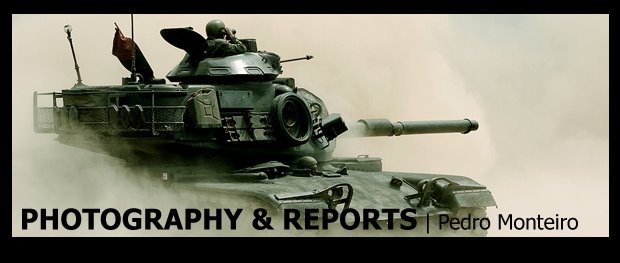 The 64-page Tankograd Missions & Manouevres 7022 - Vehicles of the Modern Portuguese Army monograph presents for the first time to English-speaking readers a detailed overview of the current vehicle pool of the Portuguese Army. The monograph also presents a detailed description of its current order of battle and international commitments.
The 64-page Tankograd Missions & Manouevres 7022 - Vehicles of the Modern Portuguese Army monograph presents for the first time to English-speaking readers a detailed overview of the current vehicle pool of the Portuguese Army. The monograph also presents a detailed description of its current order of battle and international commitments.
Where can I find it? This 145-photo monograph is now available through Tankograd Publishing and selected stores such as the Portuguese modelling store BigCat, the bookshop Ascari and Amazon.
How is it? This book has already been reviewed by several publications and webpages. Among them are the widely-known magazine Military Machines (see review), the Armorama modelling site (read the review), the Armor Modeling and Preservation Society (read the review) or the Spanish magazine Fuerzas Militares del Mundo (read their review).
How is it? This book has already been reviewed by several publications and webpages. Among them are the widely-known magazine Military Machines (see review), the Armorama modelling site (read the review), the Armor Modeling and Preservation Society (read the review) or the Spanish magazine Fuerzas Militares del Mundo (read their review).







 A look at the flight deck of the USS Dwight D. Eisenhower (CVN 69) shows several models of aircrafts which operate from the warship, such as the case of the E-2C Hawkeye, the A/F-18 E/F Super Hornet and the EA-6B.
A look at the flight deck of the USS Dwight D. Eisenhower (CVN 69) shows several models of aircrafts which operate from the warship, such as the case of the E-2C Hawkeye, the A/F-18 E/F Super Hornet and the EA-6B.  A Super Hornet of the VFA-103 Jolly Rogers.
A Super Hornet of the VFA-103 Jolly Rogers. A long line of Ike's F-18 Hornet fleet. The fighter force of the aircraft carrier has more combat aircrafts than many air forces around the world.
A long line of Ike's F-18 Hornet fleet. The fighter force of the aircraft carrier has more combat aircrafts than many air forces around the world.










